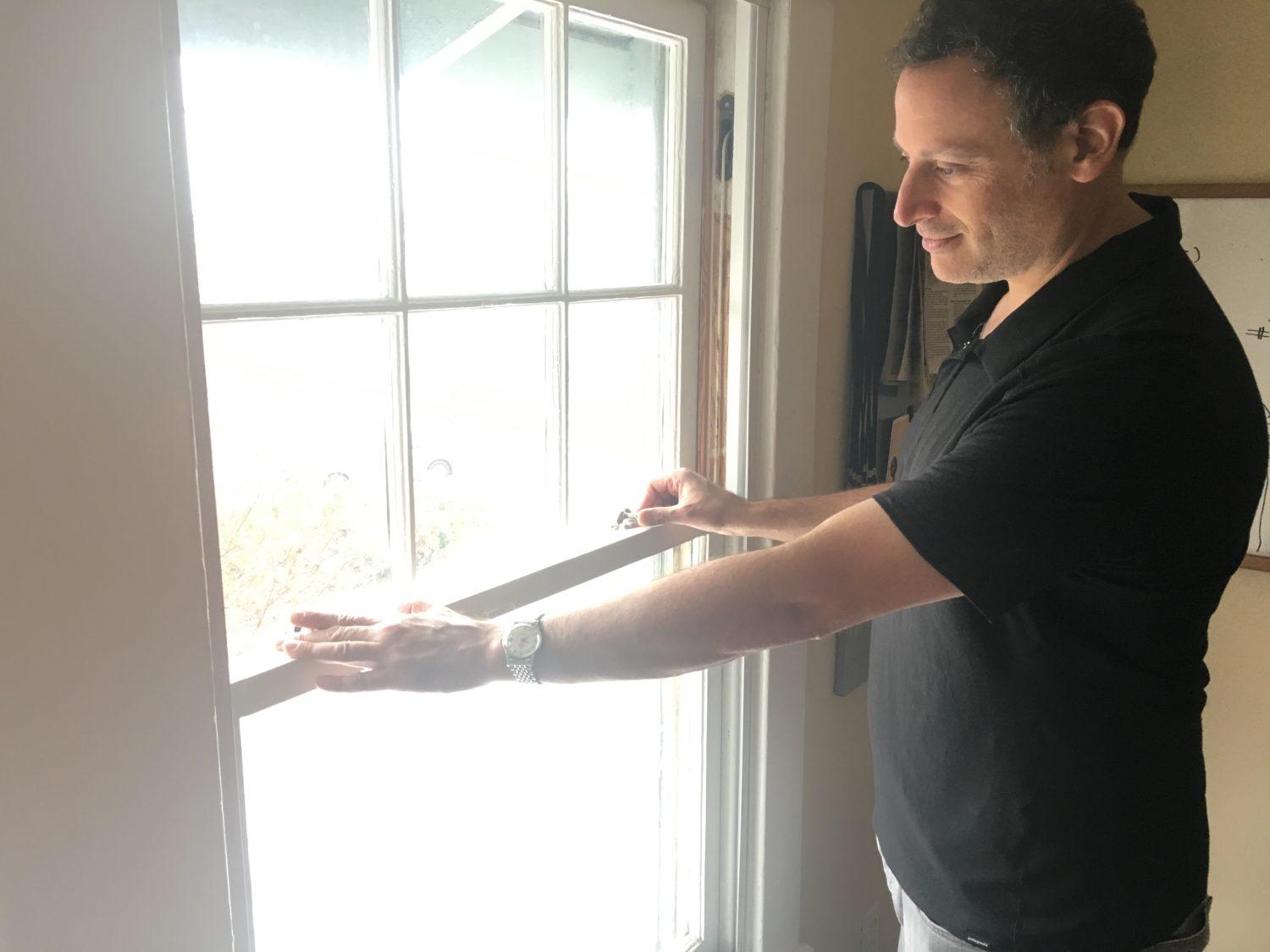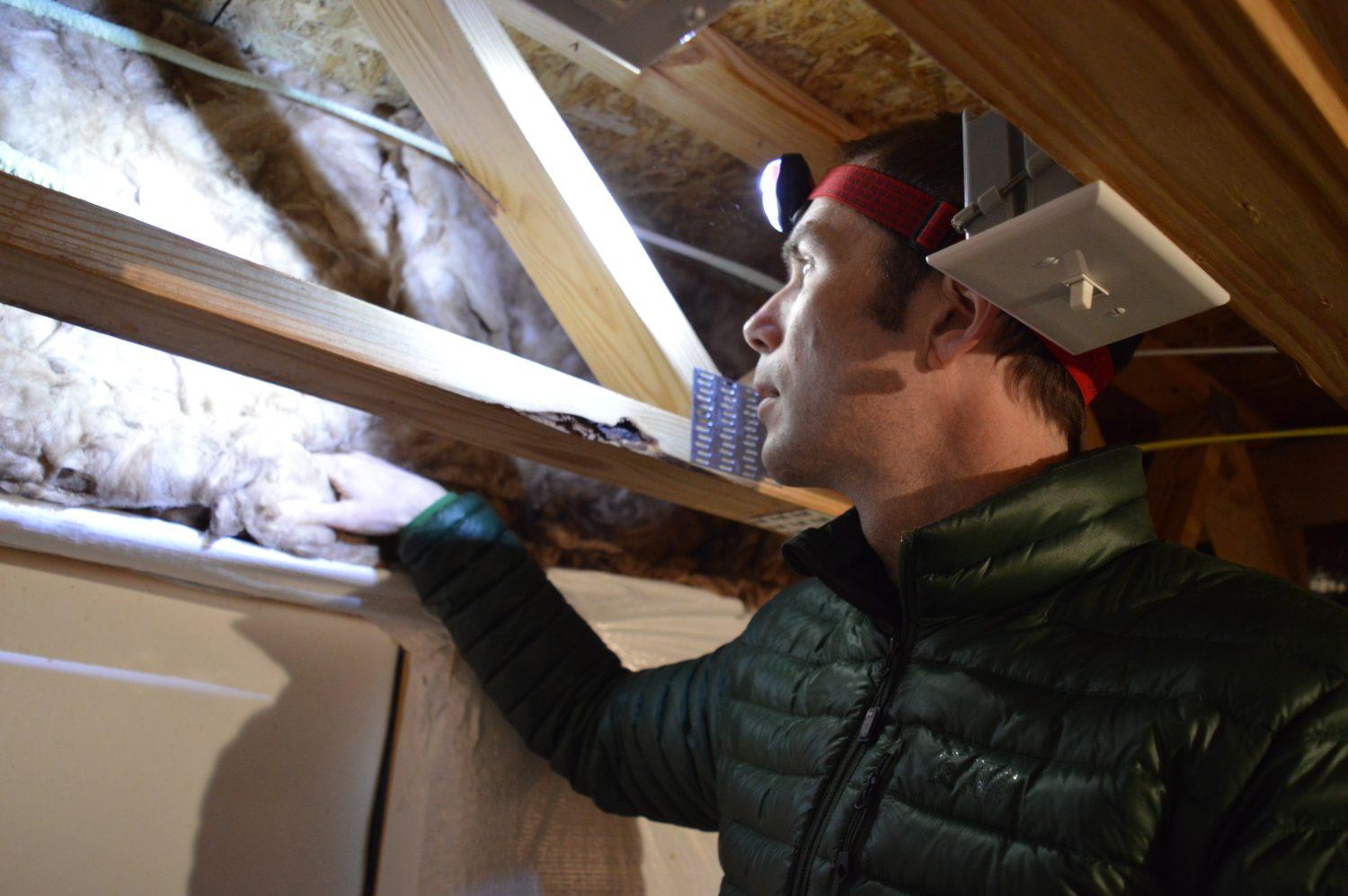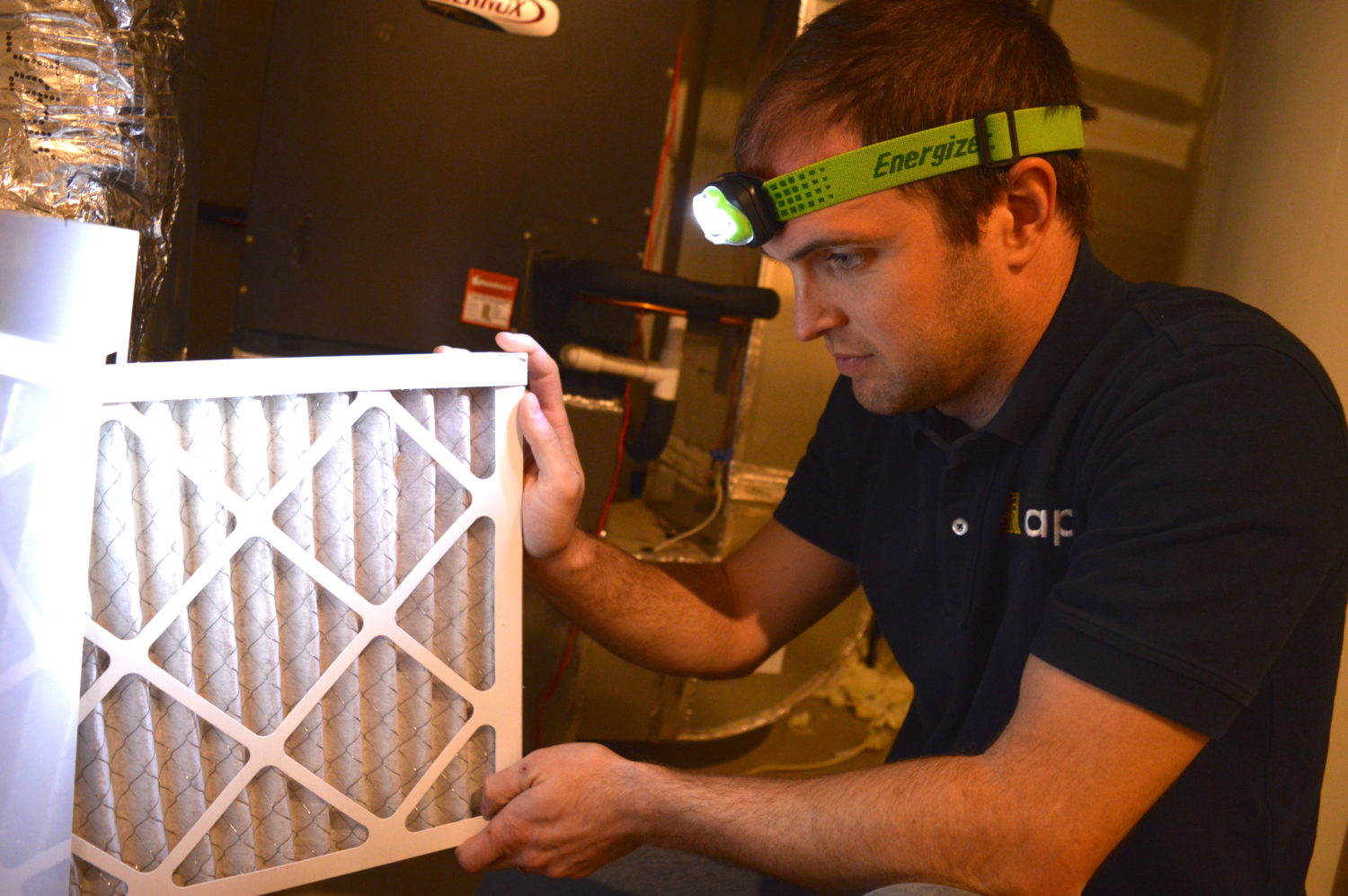In the winter, space heating is the main energy consumer in the home. However, homeowners can follow these energy efficiency tips to help stop the infiltration of cold air and the loss of heat through cracks and openings in the home.

Locking windows forms a tighter seal.
Prepare Windows
- Remove A/C window units and store them for the winter so the window can be closed and sealed.
- Close and lock windows — the locking mechanism pulls the sashes together to form a tighter seal. Caulk any gaps around the window trim and replace worn weatherstripping.
- Consider adding window draperies which can help to reduce energy loss by as much as 10%.
Prepare Exterior Doors
- Caulk any gaps around exterior door trim frames.
- Reduce the gap between the door and the floor if it’s ¼ inch or more. Install door sweeps at the bottom of doors to block cold air drafts and use draft dodgers to prevent further leaks. Thresholds on newer doors are often height-adjustable, so gaps can be eliminated by simply raising it.
- Consider replacing old exterior doors with new energy-efficient steel or fiberglass insulated doors. Look for the ENERGY STAR label.

Discolored patches of insulation is an indication of air leakage.
Stop Heat Loss in the Attic
- For blown-in insulation, verify that the attic insulation is at least 14” deep to reach the DOE recommended R-49.
- Use spray foam or caulk to seal openings in the attic that are around vents, fans, light fixtures, and wire penetrations. If you notice discolored patches of insulation, that’s an indication of air leakage through the attic floor.
- Check that the attic door is insulated and weatherstripped. If the attic door has folding stairs, consider installing an insulated attic box or attic stair cover.
- Check that recessed lights to the attic are insulated with a special fireproof insulation. If you can see light from the back of recessed lights, heat and conditioned air can escape as well.
- If ductwork is in the attic or crawlspace, make sure it is insulated and properly sealed.
Prevent Cold Air Filtration into the Basement, Crawlspace, and Utility Rooms
- Close all air vents to the outside.
- Look in your basement or crawlspace for holes leading to the outside such as where pipes or wires enter the home and around the band joist. If there are openings, clean and seal them with expandable spray foam such as Great Stuff.
- Insulate and weatherstrip any exterior basement doors as you would your front door. If your crawlspace walls are insulated, the access door should also be insulated and weatherstripped.
- Set the hot water heater to 120° F. If your hot water tank feels warm to the touch, consider wrapping it with an insulating blanket. Insulate hot and cold water pipes, though with gas water heaters, take care to keep the pipe insulation 4” away from the top of the tank and flue pipe so that it doesn’t burn the insulation.

Changing filters improves energy efficiency of your HVAC system.
Prepare the Heating System
- Have your heating system serviced annually to make sure it’s running efficiently.
- Sweep or hose off leaves and other debris around your outdoor HVAC unit.
- Change your air filters monthly in the winter to help with efficiency and to maintain airflow.
- During waking hours, program your thermostat to a comfortable temperature such as 68° F and then lower at night. Every degree the temperature is lowered will save you 1% on your energy bill.
- When you are gone from home, program your thermostat to a temperature that is at least 5° lower than your sleep temperature. Heat pumps, however, are most efficient when kept at a constant thermostat set-point.
If you suspect your home is losing energy or you have problems heating your home, consider getting an energy audit by a certified and licensed Residential Building Analyst who can help locate insulation issues and air leaks in your home.
This article was first published in the Daily Progress.
